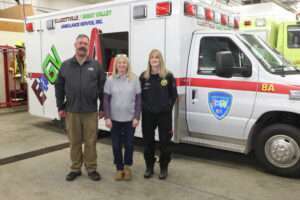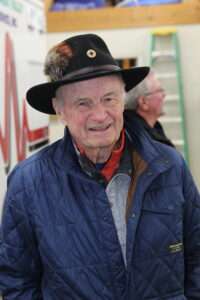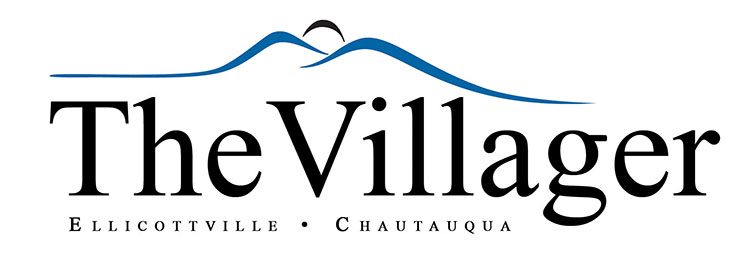by Patricia Measer
Great Valley – The Ellicottville-Great Valley Ambulance Service welcomed a new vehicle to its fleet with a special celebration at the Great Valley fire hall last Sunday. This presented a great opportunity to meet the folks who maintain and staff the fleet and give them some much deserved recognition.

On hand was Jack Rogan, one of the founders of the original Ellicottville Ambulance back in the ‘70s, along with Dana Fitzpatrick. Jack was also its first EMT instructor. He remembers the first ambulance they ever had, an old blue GMC Travelall. It was housed in what is now the Monroe Street Brick ‘N Brew. Jack noted that they have come a long way since then.

founders and first EMT
instructor of the original
Ellicottville Ambulance
back in the ‘70’s.
When the service was originally formed, it was backed by the Chamber of Commerce and relied on municipal funds to operate. It is now an independent entity. Jack noted that the new vehicle, which replaces an older model in the fleet and cost $175,000, was funded entirely from business revenues and private contributions, and no taxpayer money was spent.
The service changed in 1988 to encompass both Ellicottville and Great Valley, and their name was modified to reflect that. The business also became an independent non-profit organization at the same time. From the beginning, volunteers staffed the vehicles and drove them, and that remains true today.
“None of this would be possible without the volunteers,” says Steve Ward, President of the Board for the ambulance service. “And it’s hard to get volunteers. Most people work two jobs nowadays, or work full time while taking care of a family, so can’t always volunteer. The board cannot thank our volunteers enough.” He said that the job can be time-consuming. A run from Ellicottville to Olean can take at least two hours out of a person’s day, after factoring in paperwork and time spent at the hospital. It could be up to five hours if they have to go to ECMC.
Steve indicated that while they have a good number of volunteers right now, that isn’t always the case, so they are always looking for more. To become a EMT in New York, you have to take a state-regulated course, which involves over 200 hours of instruction across 2-4 months, depending on the class schedule. This is followed by a written exam and a practical skills test to obtain your initial certification. You can opt to become a paramedic, which is a level above EMT and requires additional training. The classes are paid for by the department, making it easier for volunteers to join.
Steve pointed out that other changes in the past 10 years have also made it simpler. One change is that the state no longer requires volunteers to take the full exam and skills test when they recertify. They can complete the periodic recertification online, which is a good incentive for prior volunteers to come back. Another change is a result of advancements in technology. EMTs no longer have to rely on their own strength to lift gurneys with patients into the back of the ambulance. All their ambulances are fitted with an auto loader, which hooks onto the end of the gurney and uses a pulley system to reel it in.
The ambulance service stays abreast of technical innovations related to the equipment stocked within each vehicle, and makes updates every few years. The board takes input from the volunteers to determine which upgrades to make, such as the latest model defibrillator. In the past, an EMT would have to call ahead to the hospital with the defib readings. Now, the machine transmits the readings automatically.
The volunteers also determine the placement of the equipment, storage boxes, etc. All three ambulances are configured the exact same way, so that in an emergency, the EMTs don’t waste time looking for things. This has the added benefit of making it easier to move equipment from one vehicle to another when needed, such as with this latest purchase.
The ambulance services is also in need of volunteer drivers. Becoming a driver entails taking just a brief course on how to drive an emergency vehicle in traffic. The service needs drivers for not only their three ambulances, but also their “fly car.” This vehicle is used when a call requires a paramedic, but the ambulance is already enroute. The fly car gets the paramedic to the scene. Steve explained that a paramedic can do more than an EMT, like start an IV or administer medications.
If you are interested in becoming a volunteer EMT, paramedic, or driver, contact your local fire department. The ambulance service purchases and maintains the equipment, but the staff are provided by and trained by the fire department.
